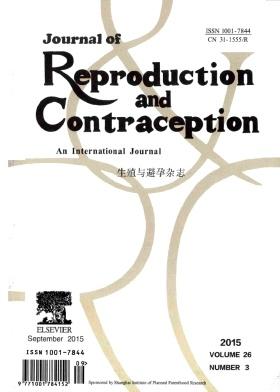Leukemia inhibitory factor enhanced the developmental and implantation compatibility of mouse embryos in co-culture with human endometrial epithelial cells
IF 0.7
4区 医学
Q4 OBSTETRICS & GYNECOLOGY
引用次数: 1
Abstract
Objective: Among the various in vitro embryo culture systems, co-culture has demonstrated remarkable effects in pre-implantation embryo development owing to the production of embryo-nourishing factors. Nevertheless, little is known about the secretion of these factors. Therefore, in this study, the effect of leukemia inhibitory factor (LIF), one of the most important nourishing factors in the early development of mouse embryos, in human endometrial epithelial cells (hEECs) was evaluated. Methods: Two-cell stage embryos were collected from the oviducts of hyper-stimulated and mated mice and cultivated in a co-culture with an hEEC monolayer with or without LIF. The quality and developmental and attachment potential rates of cultured embryos were evaluated by determining the levels of octamer-binding transcription factor 4 (Oct4) and caudal type homeobox 2 (Cdx2) transcripts. Results: LIF significantly increased the developmental rate (82.67% vs. 61.04%, respectively) and attachment rate (64% vs. 45.45%, respectively) of mouse embryos co-cultured with hEECs compared to those in untreated embryos. The expression levels of Oct4 and Cdx2 in blastocysts cultured in the presence of LIF were higher than those in blastocysts cultured without LIF. Conclusions: Despite the secretion of LIF by hEECs during co-culture with embryos, the amount of this factor was insufficient, and its addition to the culture media could increase the developmental potential of embryos.白血病抑制因子增强了小鼠胚胎与人子宫内膜上皮细胞共培养的发育和着床相容性
目的:在各种体外胚胎培养系统中,由于胚胎营养因子的产生,共培养在胚胎植入前的发育中表现出显著的效果。然而,人们对这些因子的分泌知之甚少。因此,在本研究中,评估了白血病抑制因子(LIF)在人类子宫内膜上皮细胞(hEECs)中的作用,LIF是小鼠胚胎早期发育中最重要的营养因子之一。方法:从高刺激和交配小鼠的输卵管中收集两个细胞期胚胎,并在含有或不含有LIF的hEEC单层的共培养物中培养。通过测定八聚体结合转录因子4(Oct4)和尾型同源盒2(Cdx2)转录物的水平来评估培养胚胎的质量、发育和附着潜力。结果:与未处理胚胎相比,LIF显著提高了与hEECs共培养的小鼠胚胎的发育率(分别为82.67%和61.04%)和附着率(分别是64%和45.45%)。存在LIF培养的胚泡中Oct4和Cdx2的表达水平高于不存在LIF的胚泡。结论:尽管hEECs在与胚胎共培养过程中分泌LIF,但该因子的量不足,并且将其添加到培养基中可以增加胚胎的发育潜力。
本文章由计算机程序翻译,如有差异,请以英文原文为准。
求助全文
约1分钟内获得全文
求助全文
来源期刊

Reproductive and Developmental Medicine
OBSTETRICS & GYNECOLOGY-
CiteScore
1.60
自引率
12.50%
发文量
384
审稿时长
23 weeks
 求助内容:
求助内容: 应助结果提醒方式:
应助结果提醒方式:


